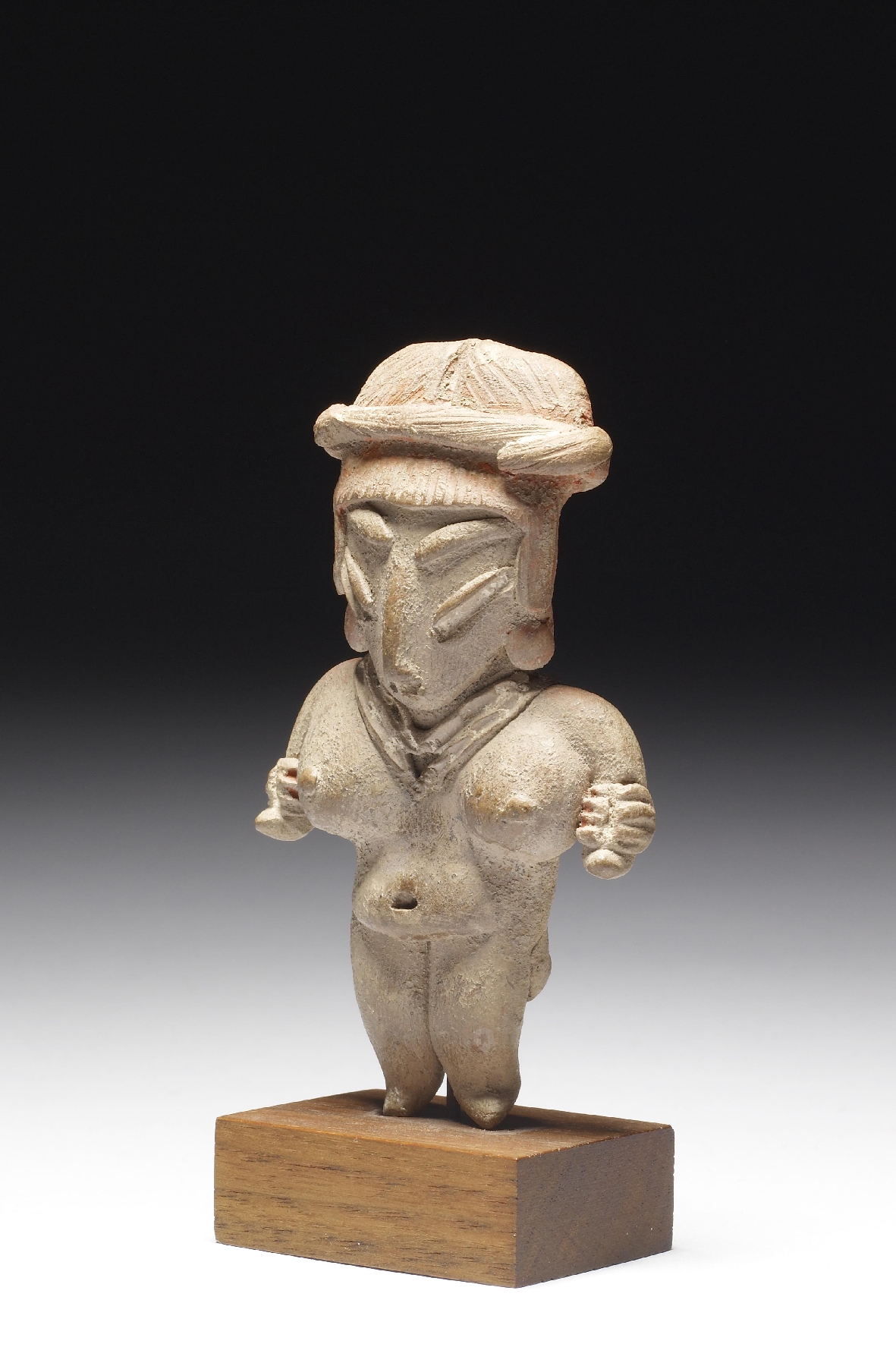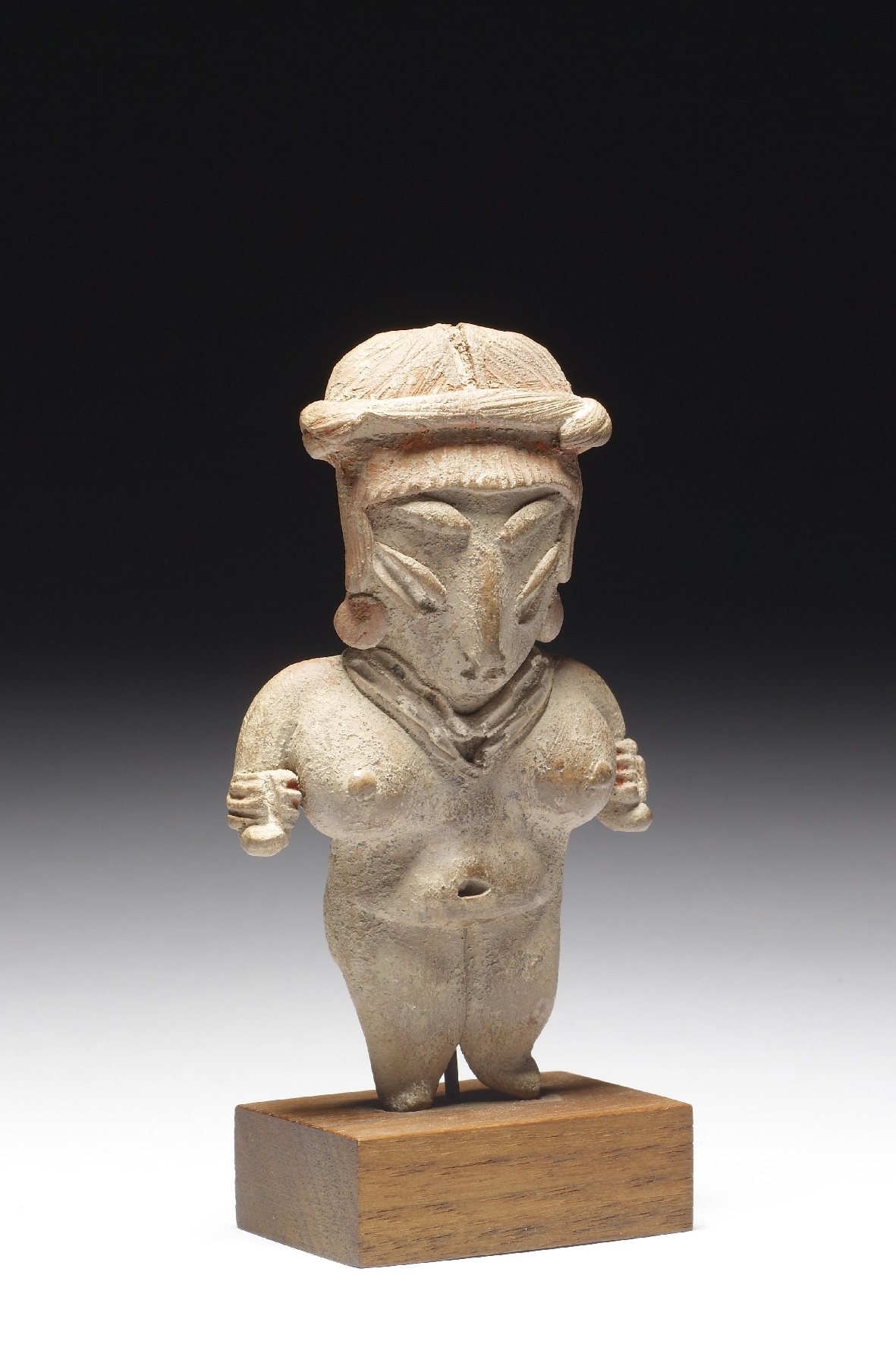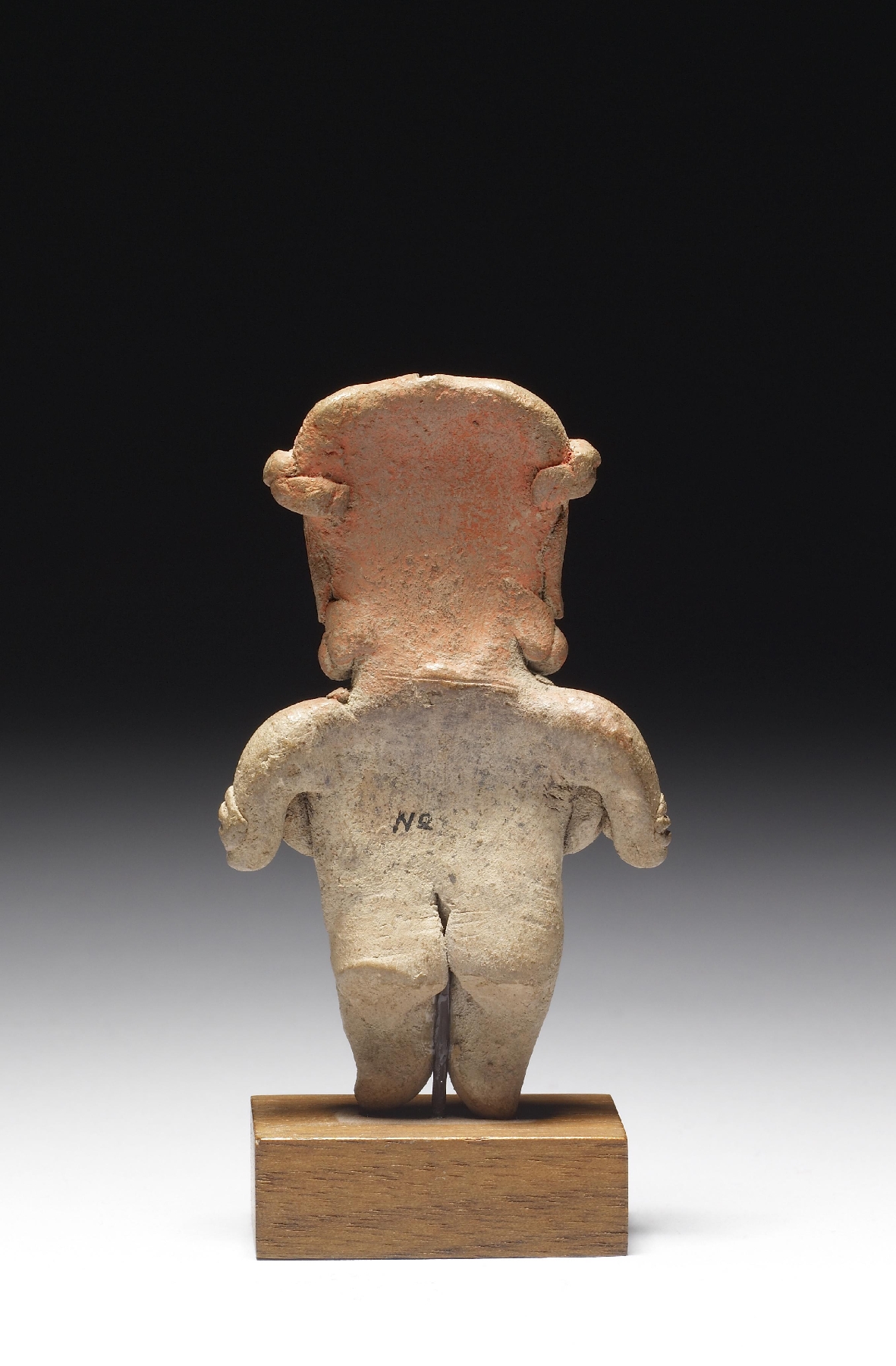Female Figurine
(Ancient Americas )
Famous for their diminutive size and fine details, Chupícuaro figurines emphasize rounded body contours and triangular faces accented by elongated, slanted eyes. Often the artists contrast the smoothness of skin with striations indicating hair, garnishing the coiffures with red pigment. Many figurines sport elaborate necklaces and ear ornaments; woven bands or hats sometimes adorn their heads.
Chupícuaro figurines' functions are not well understood. They typically are found in burials, common domestic contexts, and nonarchitectural settings such as agricultural fields. A theme of fertility is implied by the majority depicting women, often with realistically rendered genitalia and generously rounded abdomens. Regardless of their ancient function, the figurines constitute a detailed source of information concerning Chupícuaro body adornment and hairstyles, and their expressive delicacy implies an appreciation of fine craftsmanship.
Provenance
Provenance (from the French provenir, 'to come from/forth') is the chronology of the ownership, custody, or location of a historical object. Learn more about provenance at the Walters.
John G. Bourne, 1960s, by purchase [from a shop in Mexico City].
Exhibitions
| 2012-2013 | Exploring Art of the Ancient Americas: The John Bourne Collection Gift. The Walters Art Museum, Baltimore; Frist Center for the Visual Arts, Nashville. |
Geographies
Mexico, Guanajuato (Place of Origin)
Measurements
H: 3 1/2 x W: 1 7/8 x D: 1 in. (8.89 x 4.76 x 2.54 cm)
Credit Line
Gift of John G. Bourne, 2014
Location in Museum
Not on view
Accession Number
In libraries, galleries, museums, and archives, an accession number is a unique identifier assigned to each object in the collection.
In libraries, galleries, museums, and archives, an accession number is a unique identifier assigned to each object in the collection.
2009.20.226








